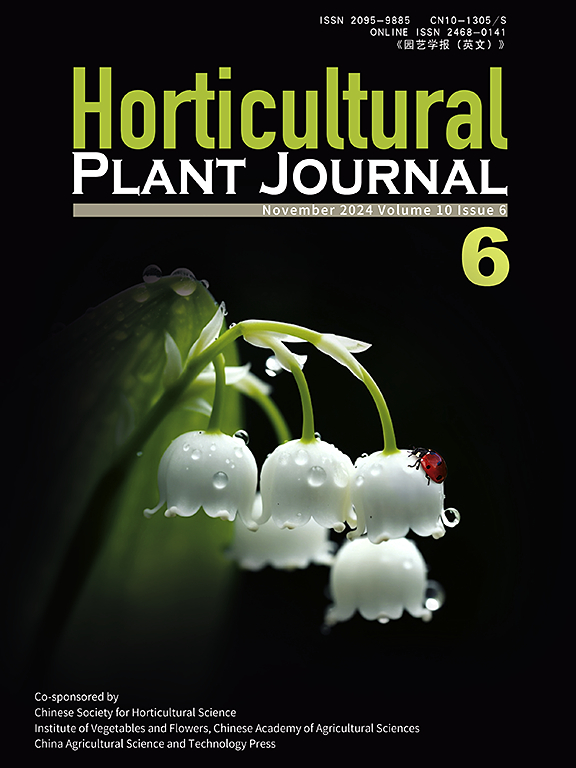Dedifferentiation and redifferentiation: The developing cell fate transition of plants
IF 6.2
1区 农林科学
Q1 HORTICULTURE
引用次数: 0
Abstract
Plant cells retain the ability for cellular reprogramming, including totipotency and pluripotency, enabling them to revert their cell fate from differentiated to dedifferentiated one and subsequently redifferentiate under specific physiological and environmental cues. In response to these cues, endogenous phytohormones, genetic landscapes, and epigenetic remodeling play a significant role in initiating the reprogramming of somatic cells and re-establishment of an organized structure. Detailed studies on dedifferentiation have gradually unraveled the involvement of stem-like cells during early callus formation, along with the existence of QC-like transcriptional features in the middle cell layer of callus, which exhibits organ regeneration ability. Tracking natural variations and real-time regeneration dynamics across species, combined with single-cell RNA sequencing, will enable the identification of key developmental regulators and small peptides. These breakthroughs can be applied to enhance regeneration efficiency, improve transformation in recalcitrant species, and accelerate next-generation crop development. The current review summarizes the longstanding history and ongoing research progress in two pathways: dedifferentiation and redifferentiation. It also highlights how hormonal effects on the genetic factors and provides insights into how genetic signatures interact with epigenetic landscapes to drive these processes. It highlights the potential applications of developmental regulators for efficient gene transformation to enhance plant genetic engineering, while also addressing fundamental questions and identifying research gaps to guide future studies.去分化和再分化:植物发育中的细胞命运转变
植物细胞保留了细胞重编程的能力,包括全能性和多能性,使它们能够从分化到去分化,然后在特定的生理和环境提示下重新分化。内源性植物激素、遗传景观和表观遗传重塑在启动体细胞重编程和重建有组织结构方面发挥着重要作用。详细的去分化研究逐渐揭示了干细胞在早期愈伤组织形成过程中的参与,以及愈伤组织中间细胞层中存在qc样的转录特征,表现出器官再生能力。追踪自然变化和跨物种的实时再生动态,结合单细胞RNA测序,将能够识别关键的发育调节因子和小肽。这些突破可以应用于提高再生效率,改善顽固性物种的转化,加速下一代作物的开发。本文综述了去分化和再分化两种途径的历史和研究进展。它还强调了激素对遗传因素的影响,并提供了遗传特征如何与表观遗传景观相互作用以驱动这些过程的见解。它强调了发育调控因子在有效基因转化方面的潜在应用,以加强植物基因工程,同时也解决了基本问题并确定了研究空白,以指导未来的研究。
本文章由计算机程序翻译,如有差异,请以英文原文为准。
求助全文
约1分钟内获得全文
求助全文
来源期刊

Horticultural Plant Journal
Environmental Science-Ecology
CiteScore
9.60
自引率
14.00%
发文量
293
审稿时长
33 weeks
期刊介绍:
Horticultural Plant Journal (HPJ) is an OPEN ACCESS international journal. HPJ publishes research related to all horticultural plants, including fruits, vegetables, ornamental plants, tea plants, and medicinal plants, etc. The journal covers all aspects of horticultural crop sciences, including germplasm resources, genetics and breeding, tillage and cultivation, physiology and biochemistry, ecology, genomics, biotechnology, plant protection, postharvest processing, etc. Article types include Original research papers, Reviews, and Short communications.
 求助内容:
求助内容: 应助结果提醒方式:
应助结果提醒方式:


